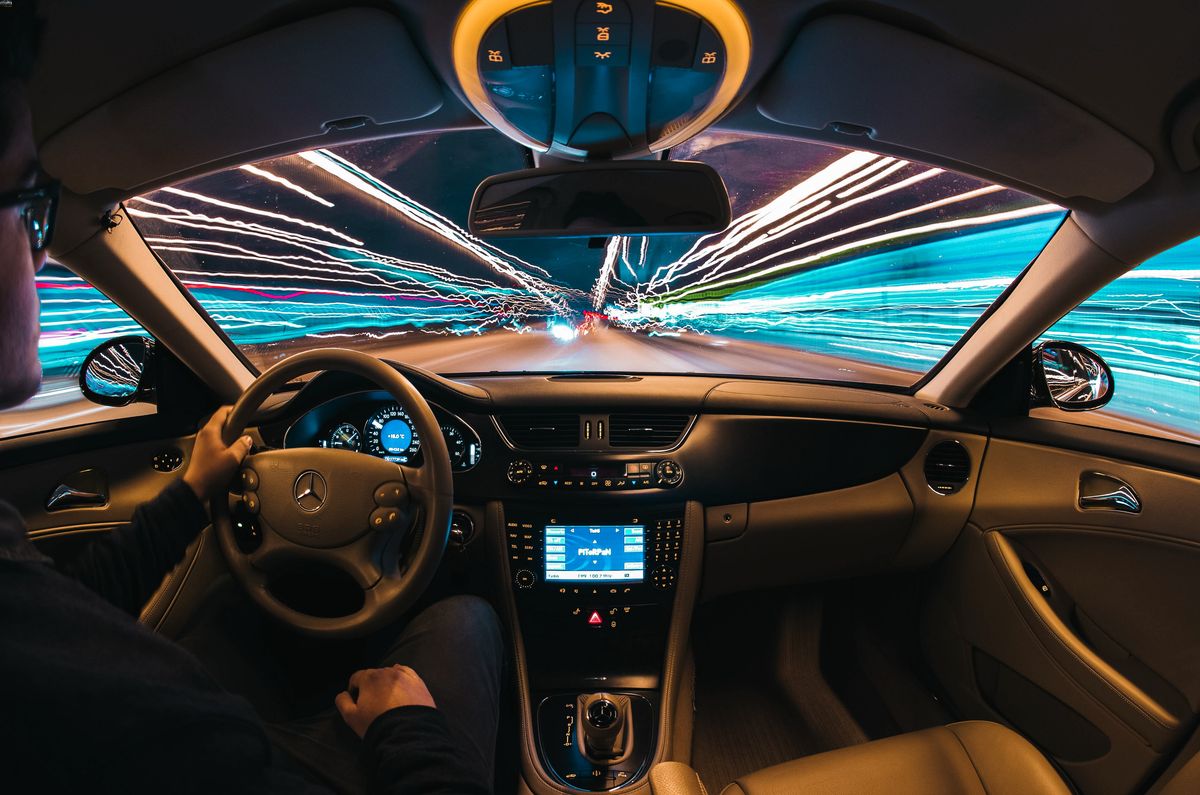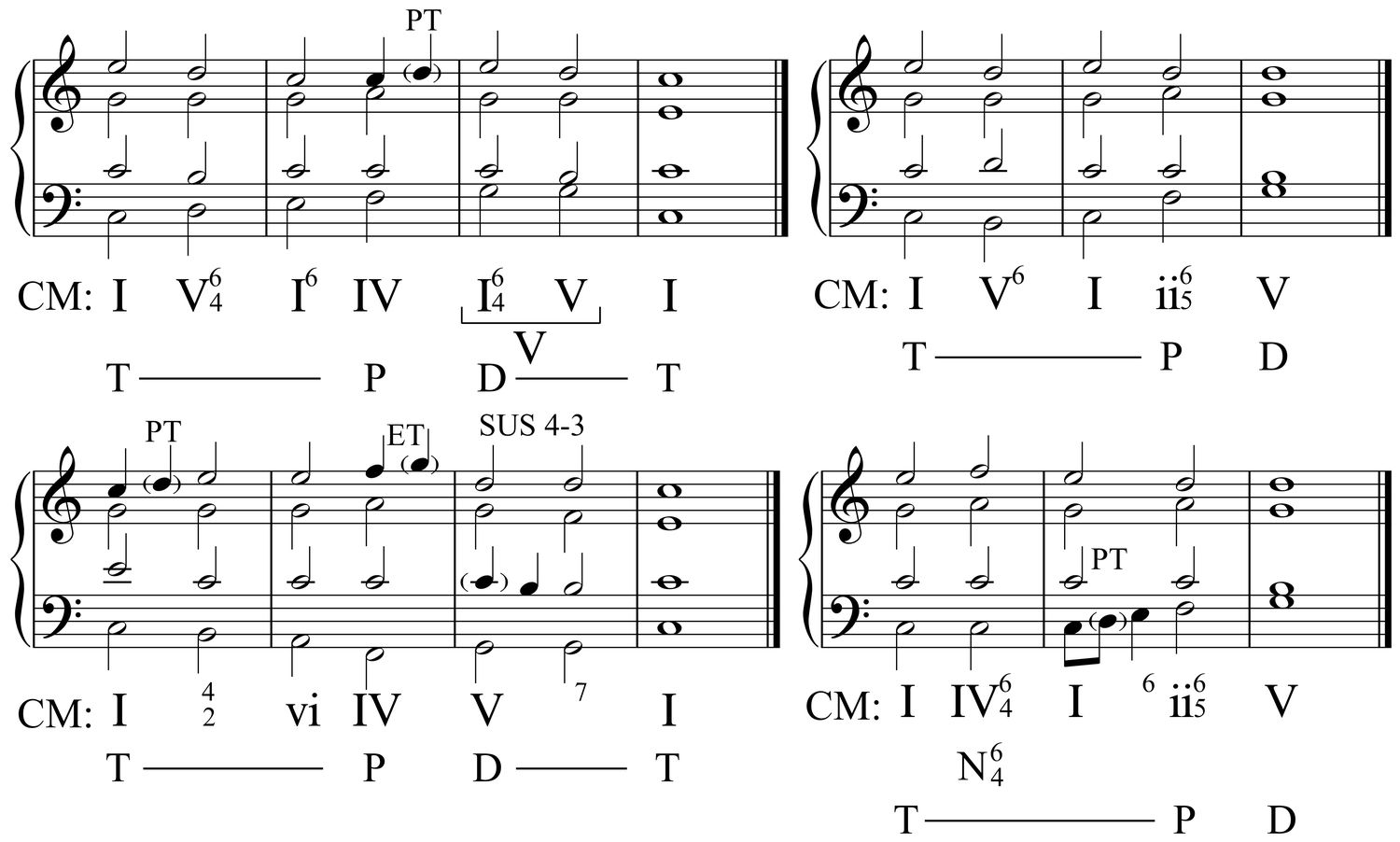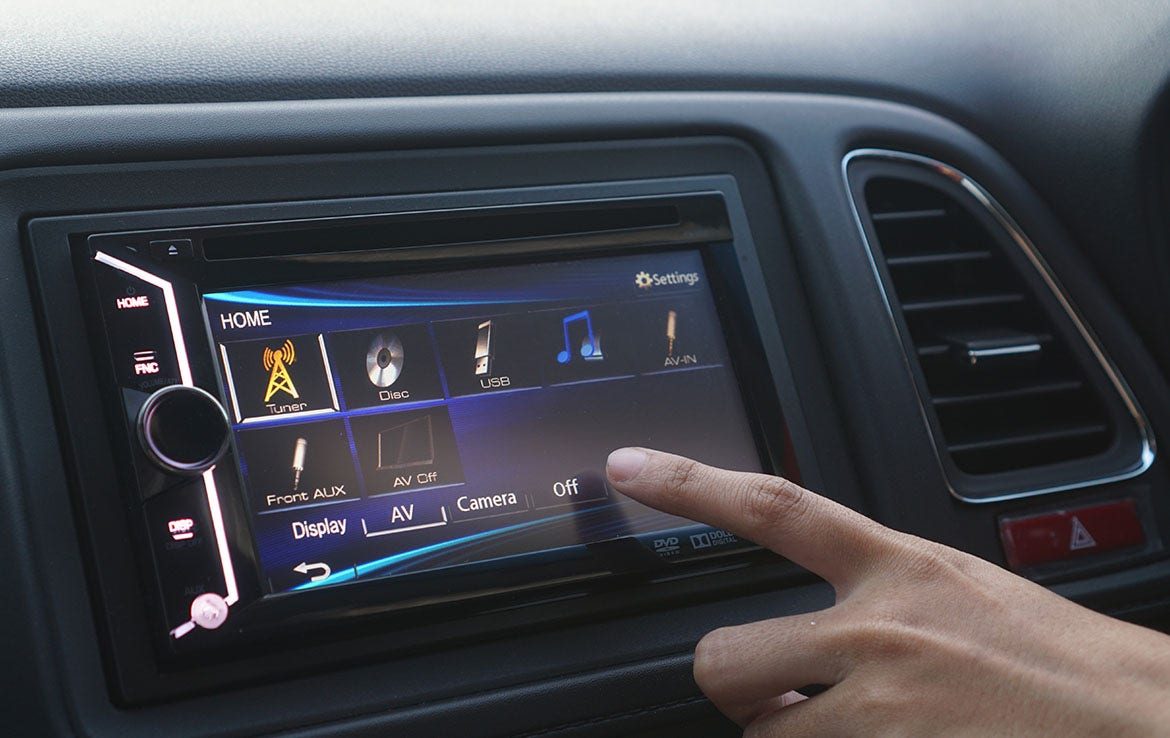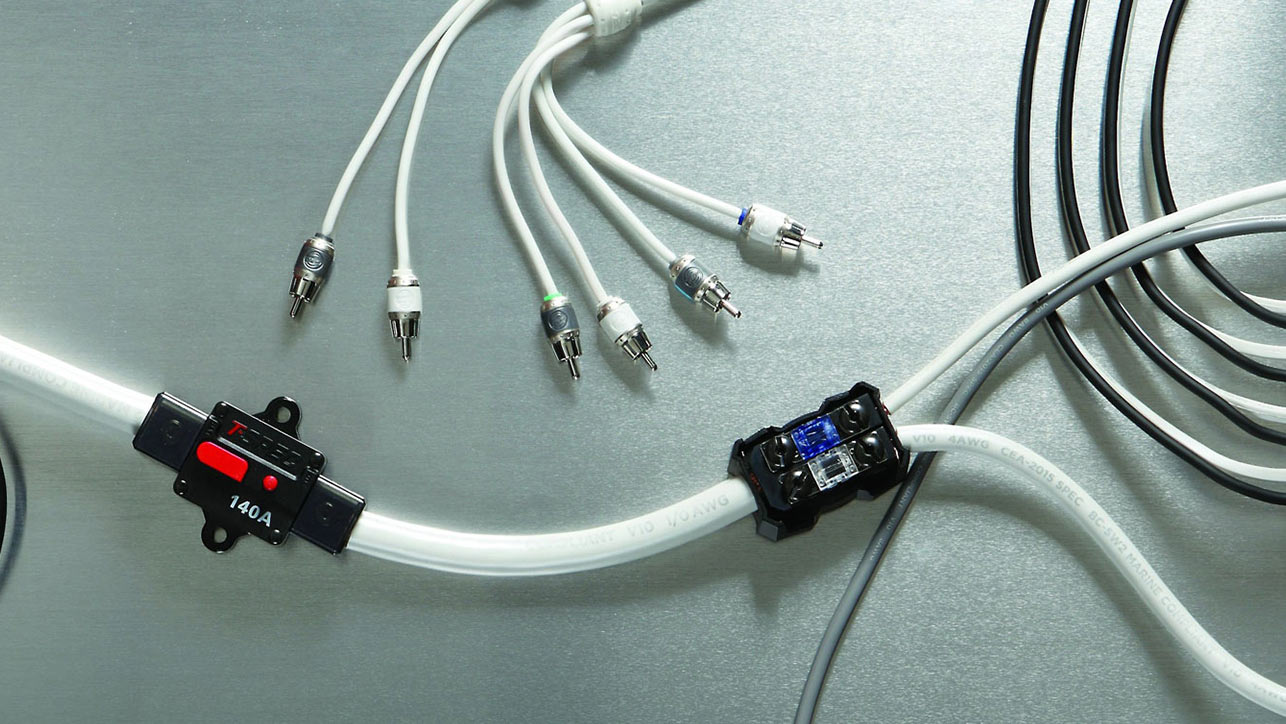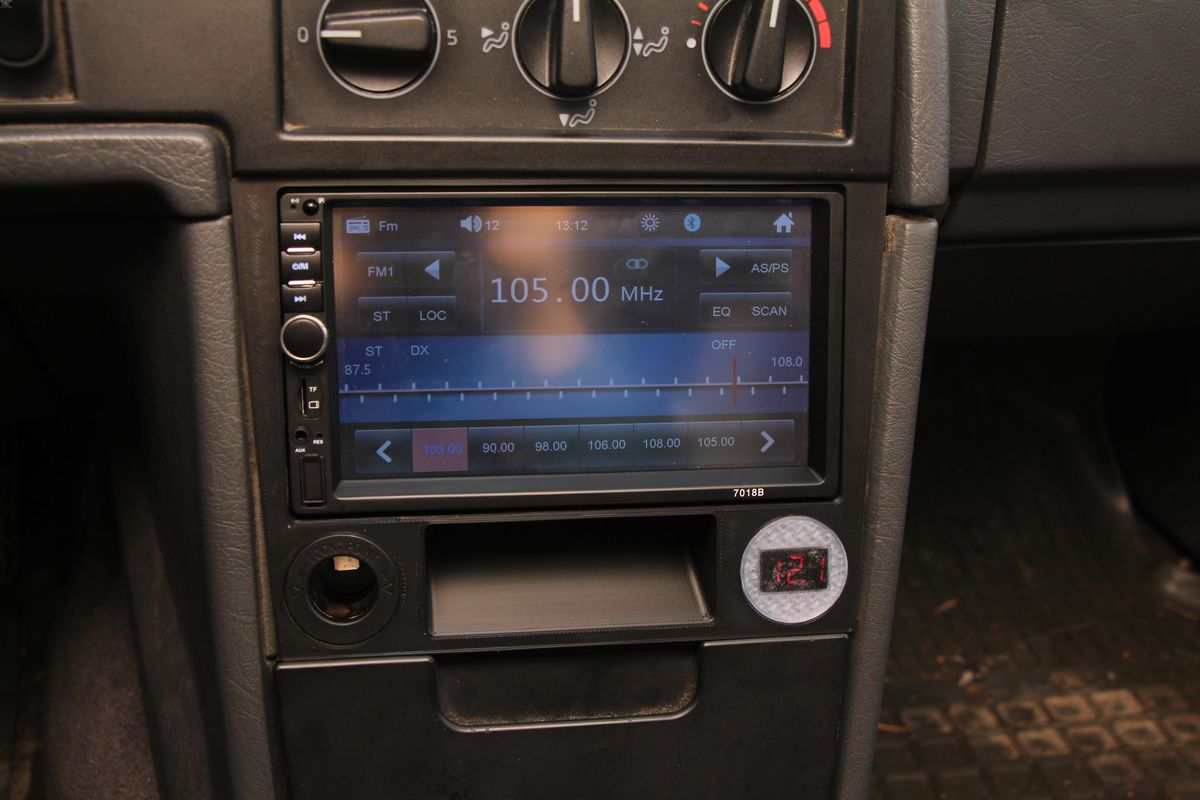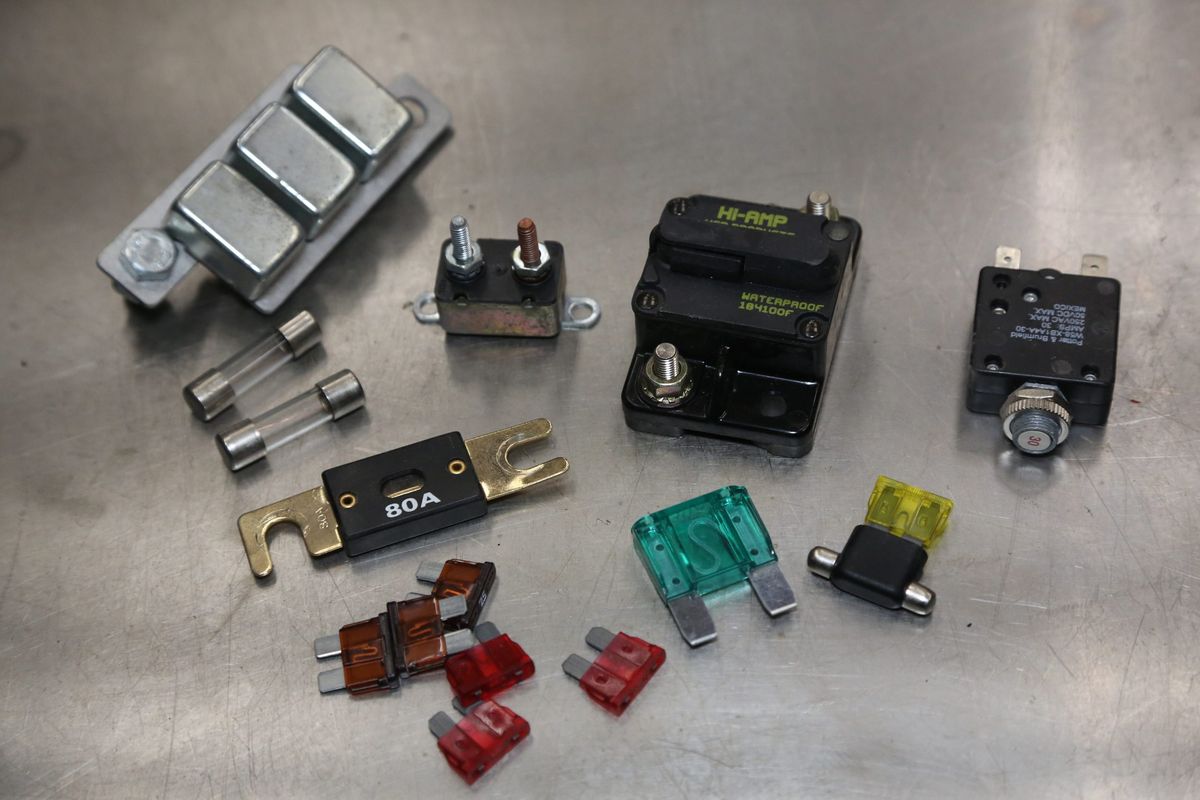Home>Production & Technology>Stereo>What Is A Pre Out On A Car Stereo


Stereo
What Is A Pre Out On A Car Stereo
Modified: January 22, 2024
Learn about the pre out feature on car stereos and how it can enhance your audio experience. Discover the benefits of using a stereo with a pre out for improved sound quality and customization.
(Many of the links in this article redirect to a specific reviewed product. Your purchase of these products through affiliate links helps to generate commission for AudioLover.com, at no extra cost. Learn more)
Table of Contents
- Introduction
- Definition of Pre-Out
- Purpose and Function of Pre-Out on a Car Stereo
- How Pre-Out Works
- Benefits of Having a Pre-Out on a Car Stereo
- Types of Pre-Out Connections
- Pre-Out Compatibility with Different Car Audio Systems
- Tips for Using the Pre-Out Feature on a Car Stereo
- Common Troubleshooting Issues with Pre-Out
- Conclusion
Introduction
In the world of car audio, the term “pre-out” is frequently mentioned when discussing stereo systems. Whether you’re a car enthusiast or simply looking to upgrade your car’s audio system, understanding what a pre-out is and its purpose is essential.
A pre-out, short for preamplifier output, is a feature found in many car stereo systems. It is an audio signal output that allows you to connect external amplifiers or other audio devices to enhance your car’s sound system. In simpler terms, it acts as a line-level signal, carrying the audio signal from the head unit to external audio equipment.
The pre-out functionality opens up a world of possibilities for customizing and upgrading your car stereo system. It provides a seamless way to connect additional amplifiers, subwoofers, or audio processors to your existing setup, allowing you to achieve a higher level of sound quality and control over your audio experience.
So why is the pre-out such an important feature in car audio systems? The primary reason is that it provides a clean and unamplified signal that preserves the audio quality, allowing external amplifiers to do the heavy lifting and power the speakers. By using a pre-out, you can avoid relying on the built-in amplification of the head unit, which often lacks the power and fidelity required for high-quality sound reproduction.
Additionally, using a pre-out helps reduce unwanted noise and interference. Since the signal is generated before amplification, it is less susceptible to picking up electrical noise from other components in the car or the environment, resulting in a cleaner audio signal.
In the following sections, we will delve deeper into how the pre-out feature works, the benefits it offers, the different types of pre-out connections, and some useful tips for utilizing the pre-out functionality on your car stereo system.
Definition of Pre-Out
A pre-out, also known as a preamplifier output, is a specialized audio signal output found on car stereo systems. It is a low-level line output that allows you to connect external amplifiers or other audio devices to enhance your car’s audio capabilities. The pre-out delivers a clean, unamplified audio signal, which can be sent to additional audio equipment for amplification and processing.
When you look at the rear panel of a car stereo unit, you will usually find a set of RCA jacks labeled as “pre-out.” These jacks provide the connection points for your audio cables to establish a link between the head unit and external audio devices. The pre-out is typically labeled as “Front,” “Rear,” or “Subwoofer” to indicate the specific channel it corresponds to.
The pre-out signal is different from the speaker-level output that powers the car’s built-in speakers. The speaker-level output is amplified, whereas the pre-out delivers a low-level, unamplified signal. By utilizing the pre-out feature, you can tap into the preamplified signal before it reaches the vehicle’s built-in amplifier, allowing you to have more control over the audio signal and enhance the overall sound quality.
It’s essential to note that not all car stereo systems have pre-out capabilities. Some entry-level or factory-installed car audio systems may lack this feature, limiting your ability to expand or customize the audio setup. Therefore, when considering a car stereo purchase, it’s advantageous to check for the presence of pre-out connections if you plan on adding external amplifiers or other audio devices to your system.
Overall, the pre-out is a crucial component for those who desire a more immersive and high-quality audio experience in their vehicles. It serves as a bridge between the car’s audio source and external audio equipment, allowing for greater flexibility in tailoring the sound to individual preferences.
Purpose and Function of Pre-Out on a Car Stereo
The purpose of the pre-out on a car stereo is to provide a dedicated audio signal output that can be used to connect external amplifiers or audio devices. It serves as a crucial link between the head unit and the additional audio equipment, opening up a world of possibilities for customizing and upgrading your car’s audio system.
One of the main functions of the pre-out is to deliver a clean and unamplified audio signal. By bypassing the built-in amplifier of the head unit, the pre-out ensures that the audio signal remains unaltered and free from distortion. This allows external amplifiers to receive a pure signal, enhancing the overall sound quality and providing more power for driving speakers or subwoofers.
Another function of the pre-out is to provide greater control over the audio system. With a pre-out connection, you can adjust the signal level and equalization settings independently for each connected audio device. This level of control allows you to fine-tune the audio output to suit your personal preferences or the requirements of the connected external equipment.
The pre-out also plays a significant role in expanding the audio capabilities of your car stereo system. It allows you to connect additional amplifiers to power speakers that require more power or to add subwoofers for enhanced bass response. This flexibility ensures that you can customize your audio setup according to your specific preferences, whether you desire a more balanced sound or prefer a more bass-heavy experience.
Moreover, the pre-out can be used to connect external audio processors or equalizers to fine-tune the audio signal even further. These devices can help in correcting any acoustic imperfections in the car’s interior or applying sound enhancements that cater to individual preferences.
In summary, the purpose of the pre-out on a car stereo is to provide a clean and unamplified audio signal that can be utilized to connect external amplifiers, subwoofers, or audio processors. It offers greater control over the audio system, enhances sound quality, and allows for customization and expansion of the car’s audio capabilities.
How Pre-Out Works
The pre-out on a car stereo works by tapping into the audio signal before amplification and delivering it as a low-level line output. This unamplified signal can then be sent to external audio devices such as amplifiers, subwoofers, or audio processors for further amplification and processing.
When audio content is played through the car stereo system, whether it’s from the radio, CD player, or Bluetooth streaming, the signal is received by the head unit. The head unit processes the signal and amplifies it to a level suitable for driving the built-in speakers. However, the pre-out feature allows you to intercept the signal before it undergoes amplification.
The pre-out connections are typically found on the rear panel of the car stereo unit, represented by RCA jacks. These jacks enable you to connect audio cables to establish a connection between the head unit and external audio devices. Each pre-out jack corresponds to a specific audio channel, such as “Front,” “Rear,” or “Subwoofer,” allowing you to control the signal distribution to various components in your audio system.
Once the signal is routed through the pre-out, it is unamplified and at line level. Line level signals are typically around 1 volt in amplitude, providing a clean and distortion-free signal. This low-level signal is then sent to the external amplifiers or audio processors, which take over the amplification duties, providing the necessary power to drive the speakers or subwoofers.
The pre-out functionality also allows for control over the signal level. Most car stereos provide a feature called “pre-out voltage control,” which allows you to adjust the signal voltage output. This control enables you to match the output level to the input sensitivity of the connected external audio devices, ensuring optimal performance and preventing any unwanted distortion or clipping.
Overall, the pre-out works by intercepting the audio signal before amplification and providing a clean and unamplified line-level output. By utilizing this feature, you can connect external audio devices and have more control over the audio signal distribution, customization, and amplification in your car stereo system.
Benefits of Having a Pre-Out on a Car Stereo
Having a pre-out on a car stereo offers several benefits that can greatly enhance your audio experience and provide greater flexibility in customizing your car’s sound system. Here are some key advantages of having a pre-out:
- Improved Sound Quality: By utilizing a pre-out, you can bypass the built-in amplifier of the head unit, which may not provide optimal power and sound quality. Instead, the pre-out sends an unamplified signal to external amplifiers, allowing for cleaner and more accurate sound reproduction.
- Increased Power: External amplifiers connected via the pre-out can provide more power to the speakers or subwoofers, resulting in a louder and more dynamic sound. This is particularly beneficial if you have high-performance speakers or if you enjoy listening to music at higher volumes.
- Customization Options: The pre-out allows you to add external audio devices, such as amplifiers, subwoofers, or audio processors, to your car stereo system. This enables you to customize the sound according to your preferences, whether you want more bass, improved clarity, or a balanced audio output. You have greater control over shaping the sound to your liking.
- Flexibility and Expandability: With a pre-out, you have the freedom to expand your car audio system. You can add more channels of amplification for a multi-speaker setup, incorporate a dedicated subwoofer amplifier for deep bass response, or even integrate audio processors to fine-tune the audio signal. This versatility allows you to create a more immersive and personalized audio experience.
- Reduced Noise and Interference: Utilizing a pre-out helps in minimizing unwanted noise and interference. Since the signal is generated before amplification, it is less susceptible to picking up electrical noise from other components in the car or external sources. This results in a cleaner, more transparent audio signal with reduced background noise and improved clarity.
Overall, having a pre-out on your car stereo system opens up a world of possibilities for enhancing the sound quality and customization options. It provides improved sound performance, increased power, flexibility, and reduced noise, giving you the ability to tailor your audio setup to your preferences and enjoy a truly immersive and high-quality audio experience while on the road.
Types of Pre-Out Connections
There are several types of pre-out connections that you may come across when dealing with car stereo systems. The specific type of pre-out connection depends on the capabilities of the head unit and the audio system. Here are some common types:
- Front Pre-Out: This type of pre-out connection is dedicated to the front speakers in your car audio system. It allows you to connect an external amplifier that will power the front speakers, providing a higher level of control and amplification for improved sound quality.
- Rear Pre-Out: The rear pre-out connection is designed for the rear speakers in your car. It enables you to connect an external amplifier to enhance the audio performance of the rear speakers. This can be useful if you want to create a more immersive surround sound experience in your vehicle.
- Subwoofer Pre-Out: The subwoofer pre-out connection is specifically intended for connecting a subwoofer amplifier. If you want to add deep, powerful bass to your car audio system, this connection allows you to send a low-frequency signal to the subwoofer amplifier, driving the subwoofer speaker for enhanced bass reproduction.
- Zone 2 or Zone 3 Pre-Out: Some higher-end car stereo systems offer additional pre-out connections for creating multiple audio zones in your vehicle. These zones allow you to have different sets of speakers or audio devices playing different audio sources simultaneously. This is particularly useful if you have a large vehicle or if you want to provide separate audio zones for passengers in the rear seats.
- High-Level Pre-Out: In certain cases, you may come across a high-level pre-out connection. This type of pre-out allows you to connect an external amplifier using speaker-level inputs rather than RCA line level inputs. It can be beneficial if you have an older amplifier or if your amplifier doesn’t have RCA inputs.
It’s important to note that not all car stereo systems will have all types of pre-out connections. The availability of these connections may vary depending on the specific model and manufacturer. Therefore, when considering a car stereo purchase or planning an audio system upgrade, it’s essential to ensure compatibility between your car stereo system and the desired external audio devices or amplifiers.
Understanding the types of pre-out connections available helps you determine the appropriate setup for your audio system, ensuring that you can connect and configure the necessary external devices to achieve the desired sound quality and customization options.
Pre-Out Compatibility with Different Car Audio Systems
When it comes to pre-out compatibility, it’s important to consider the specific car audio system you have or plan to install. While most aftermarket car stereo systems are equipped with pre-out connections, the availability and types of pre-out connections can vary depending on the manufacturer, model, and features of the head unit.
Before purchasing a car stereo or external audio devices, it’s crucial to check the specifications and documentation to ensure compatibility between the pre-out connections and the devices you intend to connect.
Here are a few factors to consider regarding pre-out compatibility:
- Number of Pre-Outs: Some car stereo systems come with multiple pre-outs, allowing for greater flexibility in connecting and controlling different audio devices. However, certain entry-level or factory-installed audio systems may lack multiple pre-outs or may not have them at all. It’s important to verify the number of pre-outs available and whether they meet your specific requirements.
- Pre-Out Voltage: The voltage level of the pre-out can vary between different car stereo systems. Common pre-out voltage levels include 2V, 4V, and higher. It’s essential to match the pre-out voltage with the input sensitivity of the external audio devices or amplifiers you plan to connect. Mismatched voltage levels can result in insufficient signal strength or potential signal distortion.
- Pre-Out Filtering and Equalization: Some advanced car stereo systems offer built-in filtering and equalization options for the pre-out connections. These features allow you to adjust the frequency response, eliminate unwanted noise, or customize the sound output. It’s worth considering if you require these additional tuning capabilities for your audio system.
- Compatibility with External Devices: When choosing external audio devices such as amplifiers or subwoofers, it’s important to ensure compatibility with the pre-out connections on your car stereo system. Look for the type of pre-out connection required (e.g., RCA or speaker-level inputs) and check if any adapters or specific cables are needed for the connection.
Remember, proper compatibility between the car stereo’s pre-out connections and the external audio devices is crucial to ensure optimal performance and avoid any compatibility issues. It’s recommended to consult the manufacturer or an expert in car audio installations to determine compatibility and make informed decisions when upgrading or configuring your car audio system.
Tips for Using the Pre-Out Feature on a Car Stereo
To make the most of the pre-out feature on your car stereo and optimize your audio experience, consider the following tips:
- Choose High-Quality Cables: Use high-quality RCA cables to connect the pre-out of your car stereo to external audio devices. Good-quality cables help maintain signal integrity and minimize signal degradation, resulting in cleaner audio reproduction.
- Adjust the Pre-Out Voltage: Ensure that the pre-out voltage matches the input sensitivity of the connected external audio devices. Adjust the pre-out voltage level accordingly to prevent issues such as distortion or insufficient signal strength.
- Keep Grounding and Wiring Clean: Proper grounding and wiring are crucial for optimal performance. Ensure that all connections are secure and properly insulated to minimize potential noise or interference issues. Check for any loose connections or damaged cables that may impact the pre-out signal quality.
- Set Correct Crossover Frequencies: If you have a subwoofer connected to the pre-out, utilize the crossover controls to set the appropriate crossover frequencies. This helps ensure a smooth transition between the main speakers and the subwoofer, preventing any frequency overlap or cancellation issues.
- Utilize Equalization: Take advantage of the equalization options available in your car stereo or connected audio processor. Adjusting the equalizer settings can help tailor the sound to your preference and compensate for any acoustic imperfections in your vehicle’s interior.
- Experiment with Sound Adjustments: Don’t be afraid to experiment with different sound settings and adjustments. Fine-tuning the balance, bass, treble, and other audio parameters can significantly impact the overall sound quality. Take the time to find the settings that best suit your musical taste and the specific characteristics of your car’s audio system.
- Consider Professional Installation: If you’re unsure about the installation process or want to ensure optimal results, consider seeking professional assistance. Professional installers have the knowledge and experience to properly integrate the pre-out feature and optimize your car stereo system for the best audio performance.
- Regularly Inspect and Maintain: Keep your car stereo system and pre-out connections in good condition by regularly inspecting and maintaining them. Check for any signs of wear, clean the connections, and address any potential issues promptly to ensure long-term performance.
By following these tips, you can maximize the potential of your car stereo’s pre-out feature and enjoy a customized and high-quality audio experience while on the road.
Common Troubleshooting Issues with Pre-Out
While the pre-out feature on a car stereo can greatly enhance your audio experience, it is not without its potential challenges. Here are some common troubleshooting issues that you may encounter with the pre-out:
- No Sound Output: If you connect external audio devices to the pre-out and experience no sound output, check the audio connections and ensure they are properly inserted and secure. Verify that the external devices are powered on and functioning correctly. Additionally, check the car stereo’s settings to ensure the pre-out is enabled and the correct audio source is selected.
- Weak or Distorted Signal: If you notice a weak or distorted signal when using the pre-out, check the pre-out voltage settings on both the car stereo and the external audio devices. Ensure that the voltage levels are matched correctly to prevent distortion or insufficient signal strength. Also, inspect the cables for any damage or poor connection that may affect signal quality.
- Ground Loop Noise: Ground loop noise is a common issue that can occur when connecting multiple audio devices. It manifests as a low humming or buzzing sound. To troubleshoot this issue, check for any ground connection issues, ensure all devices are properly grounded, and consider using ground loop isolators or filters to eliminate the noise.
- Poor Signal-to-Noise Ratio: If you’re experiencing a high level of background noise or hiss when using the pre-out, try adjusting the gain settings on the external amplifiers, audio processors, or equalizers. Improper gain levels can introduce noise into the audio signal. Additionally, ensure that all connections are secure and free from interference sources.
- Incompatibility Issues: In some cases, compatibility issues may arise when connecting external audio devices to the pre-out. Ensure that the impedance and power requirements of the connected devices are compatible with the pre-out specifications. Check the documentation of both the car stereo and the external devices for any specific requirements or recommended configurations.
- Intermittent Connection: If there are intermittent or unreliable connections with the pre-out, it’s important to check the cables and connectors for any damage or wear. Replace any faulty cables or connectors, and ensure all connections are secure and fit snugly to prevent signal loss or intermittent performance.
When troubleshooting pre-out issues, it’s recommended to refer to the car stereo’s user manual and the documentation of the connected audio devices for specific troubleshooting steps and guidance. If the troubleshooting steps are not successful in resolving the issue, it may be necessary to seek professional assistance from a car audio technician or installer to diagnose and resolve the problem.
Conclusion
The pre-out feature on a car stereo system is a valuable tool for enhancing your audio experience and customizing your sound system. By providing a clean, unamplified signal, the pre-out allows you to connect external audio devices and amplifiers to take your car’s audio capabilities to the next level.
Throughout this article, we have explored the definition and function of the pre-out, how it works, and the benefits it offers. We have also discussed the different types of pre-out connections and considerations for compatibility with various car audio systems. Additionally, we provided tips for getting the most out of the pre-out feature and troubleshooting common issues that may arise.
With the pre-out, you can achieve improved sound quality, increased power, and greater customization options for your car stereo system. Whether you want to add external amplifiers, subwoofers, or audio processors, the pre-out gives you the flexibility to tailor the audio output to your preferences and create a truly immersive audio experience.
Remember to choose high-quality cables, adjust the pre-out voltage, and properly ground and maintain your connections to ensure optimal performance. If you encounter any issues, follow the troubleshooting steps provided and consult the user manuals and documentation for further guidance.
In conclusion, harnessing the power of the pre-out on your car stereo opens up a world of possibilities for audio customization and enhancement. Embrace this feature, experiment with different setups, and enjoy the ultimate audio experience on your journeys.

